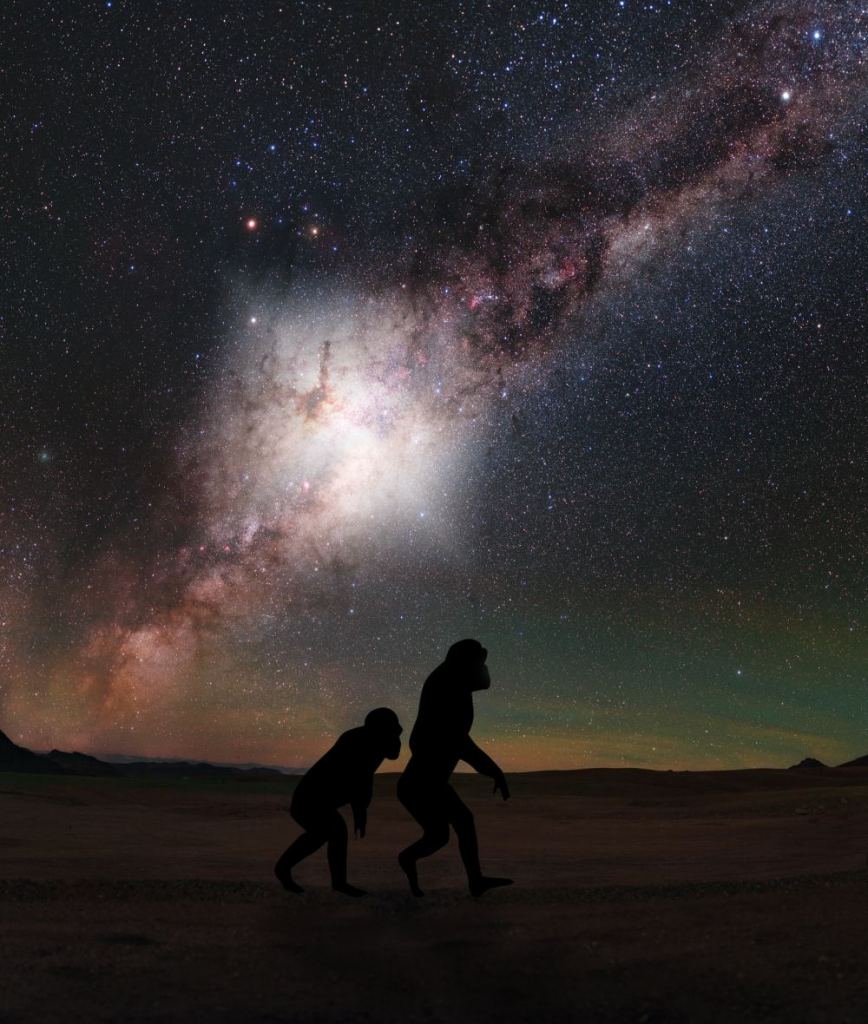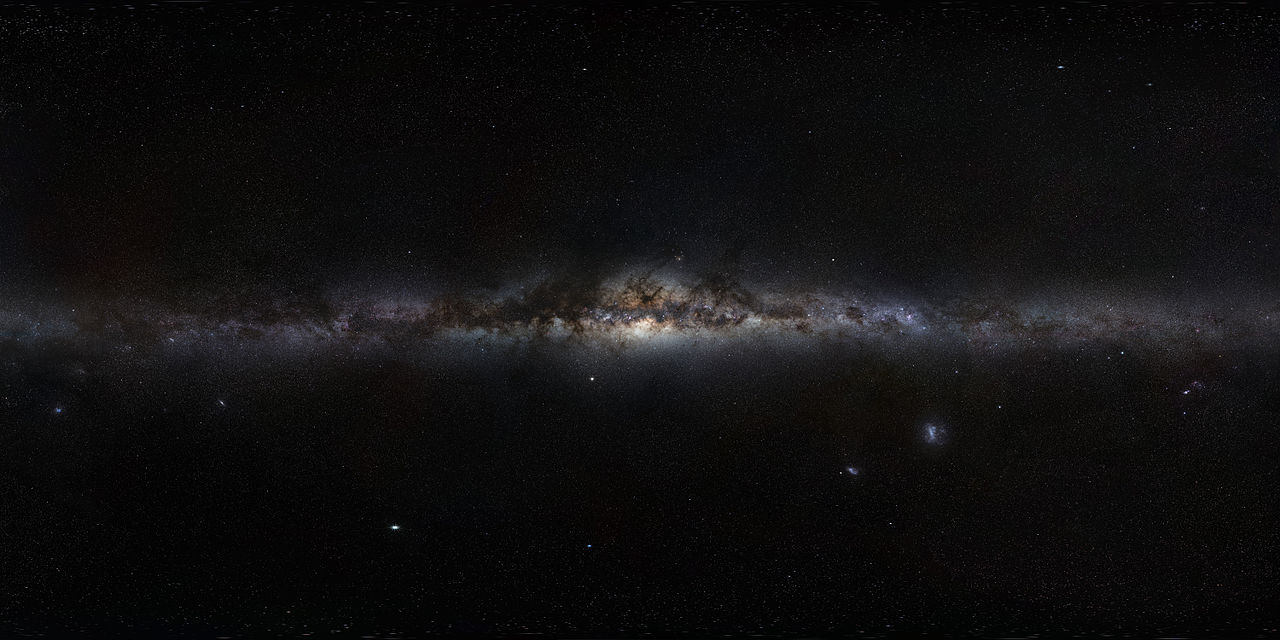In 1961, famed astronomer and astrophysicist Frank Drake formulated an equation for estimating the number of extraterrestrial civilizations in our galaxy at any given time. Known as the “Drake Equation“, this formula was a probabilistic argument meant to establish some context for the Search for Extraterrestrial Intelligence (SETI). Of course, the equation was theoretical in nature and most of its variables are still not well-constrained.
For instance, while astronomers today can speak with confidence about the rate at which new stars form, and the likely number of stars that have exoplanets, they can’t begin to say how many of these planets are likely to support life. Luckily, Professor David Kipping of Columbia University recently performed a statistical analysis that indicates that a Universe teeming with life is “the favored bet.”
Kipping is an assistant professor in Columbia’s Department of Astronomy and a researcher of extrasolar planets and moons. He is also the leader of Columbia’s Cool Worlds Lab, a group dedicated to the detection and analysis of potentially-habitable exoplanets. His latest study appeared in the Proceedings of the National Academy of Sciences, titled “An objective Bayesian analysis of life’s early start and our late arrival.”

For the sake of the study, Prof. Kipping considered the chronology of life on Earth, from the earliest evidence of microbes to the emergence of complex organisms – like humanity. He then asked the question of how often life (and intelligent life to boot) would re-emerge if this chronology were run backward and forward again, over and over. In the end, he found four possible answers:
- Life is common and often develops intelligence
- Life is rare but often develops intelligence
- Life is common and rarely develops intelligence
- Life is rare and rarely develops intelligence.
Kipping then subjected these four possibilities to a statistical analysis technique known as Bayesian inference to weigh the models against one another. This technique describes the probability of an event based on prior knowledge and then updates those probabilities as new data becomes available. As Prof. Kipping explained in Columbia News release:
“In Bayesian inference, prior probability distributions always need to be selected. But a key result here is that when one compares the rare-life versus common-life scenarios, the common-life scenario is always at least nine times more likely than the rare one... The technique is akin to betting odds. It encourages the repeated testing of new evidence against your position, in essence a positive feedback loop of refining your estimates of likelihood of an event.“

To break it all down, the earliest-known evidence for life comes in the form of fossilized bacteria found in zircon deposits on the ocean floor. Based on the depletion of carbon-13, these deposits formed just 300 million years after the Earth’s oceans. In essence, these deposits indicate that life on Earth had emerged fully as of 3.5 billion years ago, roughly one billion years after the planet formed – that’s pretty fast in geological time.
Based on this, Kipping estimates that for planets with conditions and evolutionary timelines similar to Earth, the odds of life spontaneously emerging (aka. abiogenesis) are quite good – at least 3:1 or higher. Beyond that, the odds become less favorable the farther one goes down the evolutionary timeline and the more complex lifeforms become. Said Kipping:
“If we played Earth’s history again, the emergence of intelligence is actually somewhat unlikely... The rapid emergence of life and the late evolution of humanity, in the context of the timeline of evolution, are certainly suggestive. But in this study it’s possible to actually quantify what the facts tell us.“
For example, while single-celled organisms only took a few hundred million years to form after the Earth had oceans, it took an additional 1.5 to 2 billion years before eukaryotes and multi-celled organisms emerged. Meanwhile, the Cambrian Explosion took another billion years to happen (ca. 541 million years ago), an event that was characterized by the diversification of life on Earth.

So what’s the probability that extraterrestrial life will be complex, differentiated, and intelligent? According to Prof. Kipping’s study, the odds of that are just 3:2, indicating that such life is rare. This is based on the fact that humanity began to appear late in the evolutionary record and within Earth’s habitable window, which suggests its development was neither easy nor ensured.
Taken at face value, Prof. Kipping’s study suggests that while life is plentiful in the cosmos, complex life is much rarer. However, he also points out that the odds in this study are not overwhelming and (being quite close to 50:50) and the findings should be treated as a tentative hypothesis rather than a conclusion. Or as Prof. Kipping put it:
“The analysis can’t provide certainties or guarantees, only statistical probabilities based on what happened here on Earth. Yet encouragingly, the case for a universe teeming with life emerges as the favored bet. The search for intelligent life in worlds beyond Earth should be by no means discouraged.”
Much like the Drake Equation, this study provides food for thought rather than hard evidence. Also like the Drake Equation, it demonstrates that statistically speaking, extraterrestrial life should be very common. While intelligent life may be a lot rarer, the numbers are still encouraging. Alas, we won’t know more until we can actually survey other star systems with next-generation telescopes, or interstellar probes.
Further Reading: Columbia News, PNAS


I guess there’s a basic stumbling block I come up against in thinking of this. Can we actually make ANY statements yet with only one example of life emergence? It seems like these calculations are just based on when life arose in earth’s history.
Let’s say life is ultra-rare, 1 in a trillion planets. To those few planets in the galaxy then that have life, they’re the lucky ones but without any other knowledge, how do you know what the reality is? Are we here because ultra lucky or because ultra common?
This is a problem because clearly we don’t have enough knowledge of what it takes to make life, both conditions and constituents to actually predict much of anything. If we did, we’d be able to create DNA and cells in the lab because, I dunno, we’d know what it takes to get them to form.
All of the above of course also only addresses dna-type life that we see here. There’s no way there aren’t other ways of combining reactive elements into life-type arrangements. It would be shocking if the first extraterrestrial life found is DNA based just like us. Materials science is still a science – we can’t even figure out all the combinations of inorganic elements. There’s no way we’re predicting living arrangements of elements to any useful degree.
(Wow bad comments section. Can’t edit post…)
A simpler way to look at the problem? How different would Earth have to be so that technological beings like us did not exist? 99.99+% of Earth’s history did not include technology capable creatures. And there is no obvious reason why we HAD to evolve. All in all, it wouldn’t be surprising to find many other “Earths” without intelligent/technical species.
I welcome every logical attempt to figure out the mystery of the origin of life. But this play with statistical methods, lacking statistical data, doesn’t tell me anything. It is thought that something happened some billion of years ago, but what happened is unknown. And from there on.
I saw a lecture at the space Telescope Science Institute where a biologist (geneticist) explained, quite technically above my pay grade, that the earliest life known was already well adapted to very different environments. It is not understood how it could’ve evolved such diversity so fast, if it originated in one specific environment, such as a hot vent on the ocean floor or in a tidal pond.
The lecturer did not say it, but to me it sounds like an argument for panspermia. Life might have originated and for billions of years evolved somewhere else than on Earth. Bacteria in astroidal ejecta would then have lots of genetic material from many different environments where its ancestors had evolutionary history. So when it arrived to Earth, life had alot of genetic blueprints ready to make the most out of whatever environment it encounters.
And I don’t like the claims that single celled life is not complex. It is very complex! A bacteria must do everything on its own. A human consists of simpler cells specialized on very few things.
Are the variables in that equation the right ones? Maybe it needs revision.
As far as I’m concerned life does not exist “out there”. Make no mistake I’m not biased or anything. It’s simply that extraordinary claims require extraordinary proof. Solid proof.
But I will settle for proof in the form of an anomaly in SETI data which has taken supercomputers years to reveal. Or a space alien waving at me through my Tasco Toy Telescope. Either event is good enough for me.
This study didn’t employ the Drake Equation, that’s just relevant to the topic. And there have been attempts to revise it, it’s just that any variables we consider remain hugely uncertain. As for anomalies, are you familiar with the WOW! Signal?
On the other hand, with the billions upon billions of stellar systems out there.. Chances are damned good that something has crawled out of the cracks and crevices.
And until we observe it we’ll never know if those equations are worthy.